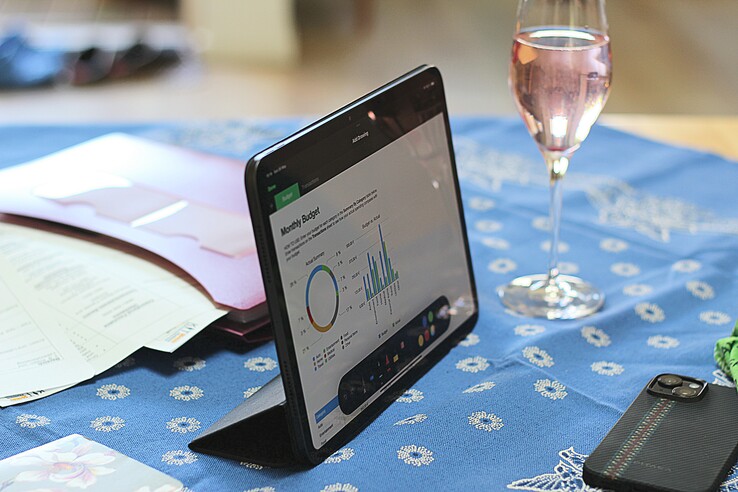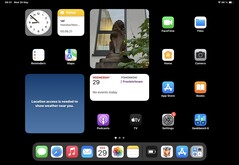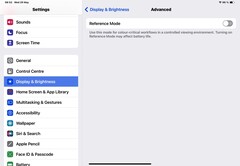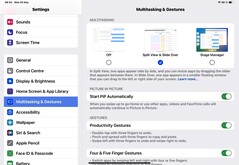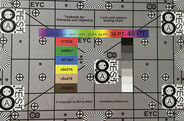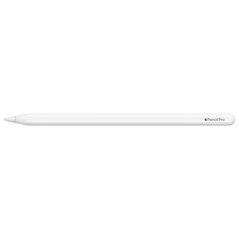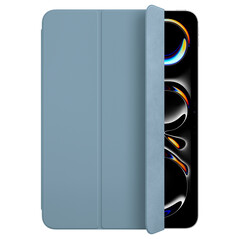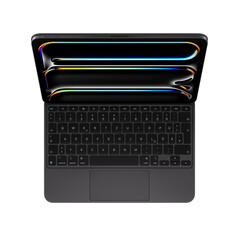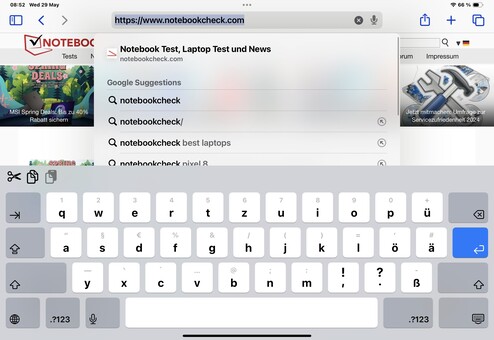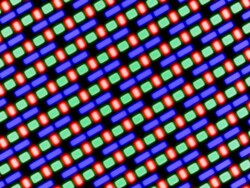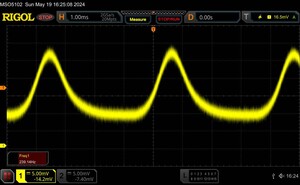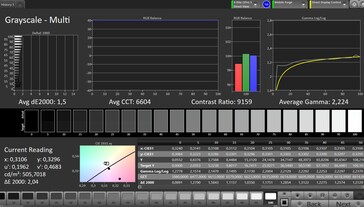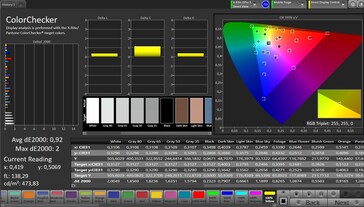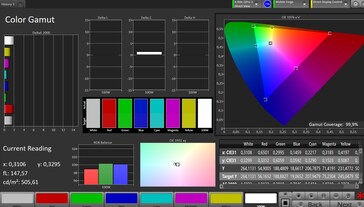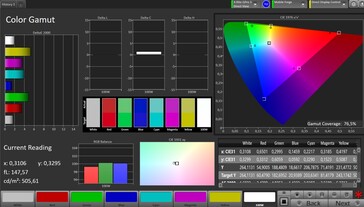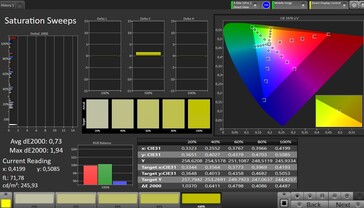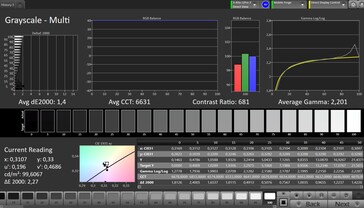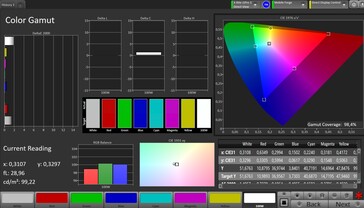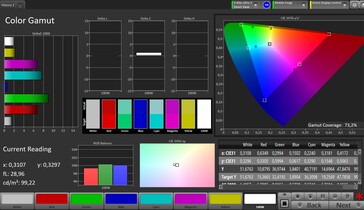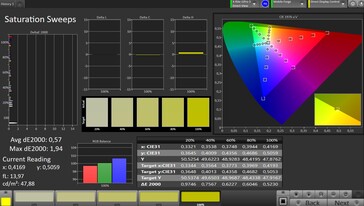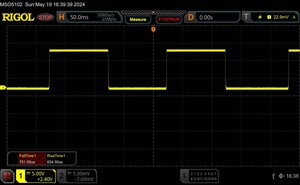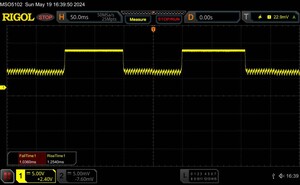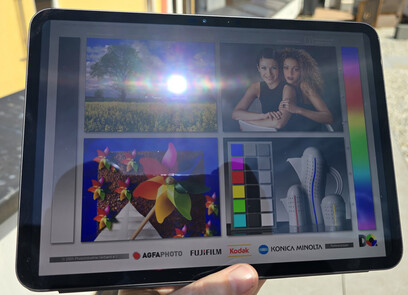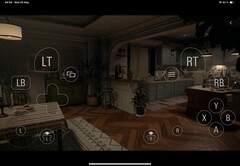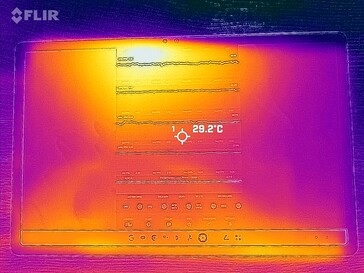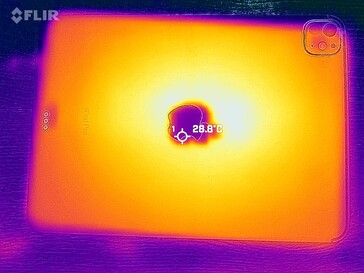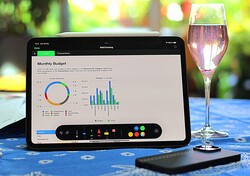Apple iPad Pro 11 2024 tablet review – Lighter, slimmer, and lightning fast
The time has come again for new hardware from Apple to arrive. At this time, the tablet flagship gets a makeover: Both the large and small versions of the iPad Pro have received new processors, even slimmer cases, OLED displays, and a new input pen that allows you to do even finer work.
In this test, we are taking a look at the smallest version of the iPad Pro 11 2024, which includes only the Apple M4 with 9 cores, offering one Performance core less than the more expensive versions. In addition, you have to be content with 256 GB of storage and also won't get Nano-texture glass, which would reduce the reflections even more.
So this is the "entry level model," although Apple is still charging 1,200 Euros (~$1,305, $999 in the US) for it. We take a look at what is different in the professional iPad compared to two years ago and for whom a purchase would be worthwhile.
Possible Competitors in Comparison
Rating | Date | Model | Weight | Height | Size | Resolution | Price |
|---|---|---|---|---|---|---|---|
| 93.2 % v7 (old) | 05 / 2024 | Apple iPad Pro 11 2024 M4 (9 cores), M4 10-Core GPU | 444 g | 5.3 mm | 11.00" | 2420x1668 | |
| 92.5 % v7 (old) | 11 / 2022 | Apple iPad Pro 11 2022 M2, M2 10-Core GPU | 466 g | 5.9 mm | 11.00" | 2388x1668 | |
| 90.9 % v7 (old) | 10 / 2023 | Samsung Galaxy Tab S9 5G SD 8 Gen 2 for Galaxy, Adreno 740 | 500 g | 5.9 mm | 11.00" | 2560x1600 | |
| 89.3 % v7 (old) | 09 / 2023 | Google Pixel Tablet Tensor G2, Mali-G710 MP7 | 493 g | 8.1 mm | 10.95" | 2560x1600 | |
| 89.7 % v7 (old) | 12 / 2022 | Huawei MatePad Pro 11 2022 SD 870, Adreno 650 | 449 g | 5.9 mm | 11.00" | 2560x1600 |
Case – Positively slimmed down
In the history of the smaller iPad Pro model, nothing much has changed in terms of the case dimensions until now. Since 2018, you have been getting more or less the same case with a slightly modified camera module. Of course, the aluminum unibody case offers a timeless design, so the case never had to change much to be able to keep up with the current trends. The heavily rounded edges are part of it. Although they make the tablet comfortable to hold, they also give a reason for complaint, since they effectively reduce the display area.
With the iPad Pro 11 2024, now Apple finally dares to make some smaller changes. The display format is changing, with the display and tablet becoming slightly longer, offering 32 pixels more in length and reaching a format ratio of almost 3:2. In addition, Apple has managed to cut 1 millimeter (~0.04 in) from the short sides and 0.6 millimeters (~0.024 in) from the thickness of the tablet, while still offering a larger battery volume. Compared to the iPad Pro 11 from 2022, the weight was also reduced by 22 grams (~0.78 oz), which corresponds to almost 5%.
The workmanship and materials used offer a high-quality feel, and the transitions between the materials cannot be felt. It is not possible to twist the iPad Pro with your hands with a normal use of force, and you won't even hear any creaking noises if you try. The durability tests on YouTube also show that you have to try hard to cause some damage to the iPad Pro. For example, the displays continue to work after all the tests, even though some of the devices were bent considerably.
In terms of sustainability, Apple gives extensive information on its product. For example, at this point the iPad Pro contains 20% of recycled materials, and the total CO2 footprint including usage and recycling of the product corresponds to 93 kg (~205 lb) of CO2. The case is made to 100% of recycled aluminum and contains 35% of recycled plastic and other recycled materials such as rare earths, copper, tin, and gold.
Equipment – More expensive or more affordable?
As mentioned above, we test the minimum equipment of the tablet with 256 GB of storage. This is 128 GB more than in the predecessor, and you also pay at least 1,199 Euros (~$1,304, $999 in the US) for the tablet from now on, while the predecessor was introduced for 150 Euros (~$163) less. At 20 Euros (~$22) more, the additional cost turns out smaller compared to the predecessor with the same storage equipment, and the price of some of the more expensive versions is not changing at all or even becoming minimally cheaper.
The 8 GB of RAM remained, and as in the predecessor, the larger storage versions also get more working memory, namely 16 GB. With the Nano-texture glass for the display, a new option that increases the price was added.
Specifically, the following models are available:
- 8 GB RAM, 256 GB ROM, standard display glass: 1,199 Euros ($999 in the US, 4.68 Euro/$3.09 per GB)
- 8 GB RAM, 512 GB ROM, standard display glass: 1,449 Euros ($1,199 in the US, 2.83 Euro/$2.34 per GB)
- 16 GB RAM, 1 TB ROM, standard display glass: 1,929 Euros ($1,599 in the US, 1.93 Euro/$1.60 per GB)
- 16 GB RAM, 1 TB ROM, Nano-texture glass: 2,059 Euros ($1,699 in the US, 2.06 Euro/$1.70 per GB)
- 16 GB RAM, 2 TB ROM, standard display glass: 2,409 Euros ($1,999 in the US, 1.20 Euro/$1 per GB)
- 16 GB RAM, 2 TB ROM, Nano-texture glass: 2,539 Euros ($2,099 in the US, 1.27 Euro/$1.05 per GB)
Apple has increased the premium for the mobile communication module from 200 to 250 Euros (~$218 to ~$272), resulting in the most expensive equipment version now costing almost 2,790 Euros ($2,299 in the US). If you add the Apple Pencil Pro and Magic Keyboard, you end up with far more than 3,000 Euros ($2,727 in the US).
The USB-C connection required in the EU has already been available in the iPad Pro since 2018. As in the previous generation, it is internally connected according to the modern USB-4.0 standard, allowing data connections of up to 40 Gbit/s and also being compatible with Thunderbolt 3. The DisplayPort protocol is also supported, so that you can use the port to connect an external monitor.
Apple continues to regard NFC as an unnecessary addition to the large tablet, even though that would provide you with additional usage options such as wireless payment.
Software – Soon also including other app stores
The new iPad Pro is delivered with iPadOS 17.5 as the operating system. Since iPadOS 17, the system also offers improved adjustments of the lock screen with widgets and optionally your own wallpaper. It is now easier to interact with widgets overall, even without opening the corresponding app. The iPad camera can now be used as a webcam by other devices. Of course, Apple's own apps have received several new features, such as Apple Maps, which now also supports offline maps.
Apple includes a whole bunch of these inhouse apps: You get a complete Office package, a recording studio for music with Garage Band, and a video processing app with iMovie.
Until now, you had to consider that you were limited to the AppStore as the source for new applications. While Apple justified this with security, it also received a decent cut with each app sale and was able to control what was being offered and what wasn't. The EU now requires Apple to also open its ecosystem for other app shops, and the apps for this are already available. But the settings necessary for this are only available in iOS, and at the time of this test you cannot install apps from other sources in iPadOS.
Apple doesn't make any concrete promises about how long there will be updates of iPadOS for the iPad Pro 11 2024. However, we can say from experience that Apple products are usually supported for a very long time. The period of receiving updates is usually 6-8 years, so we expect support until between 2030 and 2032. Even for iPadOS versions that are not supported anymore, there are emergency updates for grave problems or security breaches.
Communication and GNSS – Fast WLAN but no WiFi 7
Our test unit of the iPad Pro 11 2024 is a pure WLAN model. Like its predecessor, it supports WiFi 6E but is able to create a significantly faster connection to our Asus ROG Rapture AXE11000 reference router. We now measure more than 1500 Mbit/s when receiving and slightly less than 1 Gbit/s when sending.
It is unfortunate that the currently fastest WiFi 7 standard is not supported yet, but it is still able to take fairly good advantage of Gigabit Internet connections. The iPad Pro is able to transfer data very quickly in internal networks, and there is hardly any other tablet that is able to keep up with it.
There is full reception close to the router, and websites are rendered very quickly. At a distance of 10 meters (~33 ft) to the access point and through 3 walls, the signal strength is reduced by about 1/3, but websites still load quickly.
Those who purchase the version with the mobile communication module will additionally get satellite locating and eSIM support. However, the iPad Pro then still won't include a slot for Nano-SIM cards.
| Networking | |
| Apple iPad Pro 11 2024 | |
| iperf3 transmit AXE11000 6GHz | |
| iperf3 receive AXE11000 6GHz | |
| Apple iPad Pro 11 2022 | |
| iperf3 transmit AXE11000 6GHz | |
| iperf3 receive AXE11000 6GHz | |
| Samsung Galaxy Tab S9 5G | |
| iperf3 receive AXE11000 | |
| iperf3 transmit AXE11000 | |
| Google Pixel Tablet | |
| iperf3 receive AXE11000 | |
| iperf3 transmit AXE11000 | |
| Huawei MatePad Pro 11 2022 | |
| iperf3 receive AXE11000 | |
| iperf3 transmit AXE11000 | |
Cameras – No ultrawide angle anymore
One particularity of the latest iPad Pro was that it included a fairly extensive camera system for a tablet, even offering an ultrawide angle lens in addition to the main lens. However, Apple has decided to cut this second camera from the iPad Pro 11 2024.
So there is now only a single lens in the back. There are also no improvements compared to the predecessor. But at least there is a 12-Megapixel camera with OIS, which really takes very good pictures for a tablet. However, this doesn't mean that the iPad Pro would be able to keep up with good smartphones in terms of image quality, since the number of details is significantly lower than with an iPhone 15.
Apple even managed to allow you to record videos in 4K ProRes at 60 Hz. These are even quite attractive in daylight and can immediately be processed on the iPad Pro. Since the Apple iPad Pro 11 2024 includes four microphones, the recorded sound also offers a high quality. Compared to the predecessor, one microphone was removed.
However, due to the tablet's size, recording a video on the road is significantly more cumbersome than when using a smartphone. And since the quality is also lower overall, the iPad Pro is probably more suitable for recording videos in an emergency, although it is great for the cutting and processing of videos.
The built-in LIDAR sensor allows you to measure distances and also place augmented reality objects accurately in space.
There is a 12-Megapixel camera in front that can use the display as a flash if necessary. It offers a very wide viewing angle of 120°. The resulting selfies are acceptable in good light conditions, although you shouldn't try to enlarge them too much, since they can then get very grainy.
But the front camera is mainly meant for other usage scenarios anyways: With its built-in infrared sensor, the camera is able to calculate depth, so it is suitable for FaceID, allowing you to unlock the tablet using your own face. In addition, this extra sensor also allows following your own face in video conferences, so that you always remain in the center of the image even when you move around.
Image comparison
Choose a scene and navigate within the first image. One click changes the position on touchscreens. One click on the zoomed-in image opens the original in a new window. The first image shows the scaled photograph of the test device.
Main camera: plantMain camera: surroundingsMain camera: Low LightThe main camera on the back again has to demonstrate its capabilities in our lab under controlled light conditions. Aside from some object edges that are slightly less clean, the image looks very sharp and offers good contrasts. The sharpness decreases slightly toward the edges.
The color reproduction is relatively accurate overall, but at a brightness of 1 Lux, the camera is unable to recognize anything anymore.
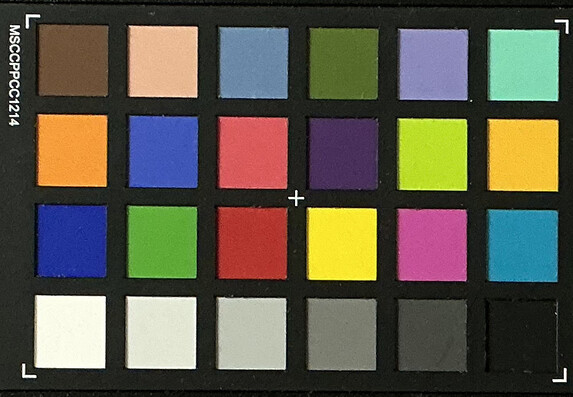

Accessories and Warranty – A lot of high-quality (and expensive) accessories
The only accessory Apple includes in the box of the iPad Pro 11 2024 is a 1-meter (~3 ft.) USB cable. Those who purchased the Nano-texture glass option of the display will also get a polishing cloth for the screen.
As already with the predecessor, the included cable is not a high-quality Thunderbolt but a USB-2.0 cable that only offers slow data transfer speeds and doesn't support image output. You can get a Thunderbolt 3 cable from Belkin in Apple's shop for almost 30 Euros ($30 in the US). The corresponding charger costs 25 Euros (~$19 in the US).
You can turn the iPad Pro into a laptop replacement if you purchase the Apple Magic Keyboard, but that costs an additional 350 Euros ($299 in the US). A Smart Folio without the keyboard costs almost 90 Euros ($79 in the US). Of course, there is also a huge number of accessories from third-party vendors, allowing you to save a significant amount of money at times.
What is interesting is the new Apple Pencil Pro for almost 150 Euros ($129 in the US), and we will take a more detailed look at that in the next section. However, you can also use an Apple Pencil with the iPad Pro 11 2024 if you already have that.
The manufacturer only offers a 12-month warranty for its tablet, but you can extend this with Apple Care+: You can have your tablet repaired after accidental damage, and during this time you can get a replacement device. However, you have to pay a service fee between 29 and 99 Euros ($29 - $99 in the US). Apple Care+ is available for two years for 159 Euros ($149 in the US) or 7.99 Euros ($7.49 in the US) a month.
Input Devices and Operation – Accurate touchscreen
As the heart of the tablet operation, the touchscreen in the iPad Pro 11 2024 is again very responsive. The surface only offers minimal resistance to sliding fingers, allowing you to scroll quickly and hit the controls accurately. The touchscreen is also easy to operate accurately in the edges and corners. You can connect a mouse and keyboard to the iPad either via Bluetooth or using an adapter and the USB port.
FaceID is available as the method for biometric unlocking. This is a 3D face recognition that is very secure from manipulations and even able to recognize whether the user is really looking at the display. The recognition succeeds very quickly and reliably using the front camera. It even works with some sunglasses and in low light conditions.
What is of course also very interesting is the new Apple Pencil Pro that we have the opportunity to try out: It brings several new features such as pressure recognition on the pen shaft and a position sensor in relation to the display.
Operating the iPad Pro 11 is even more accurate using the pen in many situations, since the slim pen tip is able to hit even very small control elements very accurately. However, its main application area probably lies in creating notes and drawings in particular. In this, the new pressure recognition offers many new options. For example, if you press with your finger, some additional options are displayed on the screen, allowing you to use them directly.
Display – Finally OLED
One reason, why Apple has equipped the new iPad Pro with the fast Apple M4 might also be the demanding display technology. Until now, Apple has preferred IPS or Mini-LED displays in its iPads over the more contrast-rich OLEDs, since they are able to deliver a higher brightness for a long time without aging.
But now Apple perfected a technology that also allows an OLED display in the iPad Pro: Instead of one, Apple uses two displays, placing them (probably slightly offset) behind each other. In this way, the brightness of the two OLED panels is added, while each of the diodes only has to be half as bright, which significantly slows down the aging process.
At 2420x1668 pixels, the resolution has only changed minimally compared to the predecessor. On the other hand, the maximum display brightness has increased significantly: Apple specifies around 1,000 cd/m², and this also is exactly what we measure in our test with the spectral photometer. In smaller areas (APL 18), up to 1,562 cd/m² are possible according to our test. With the OLED technology, a background illumination is not necessary, also allowing to display even very deep black color and resulting in very powerful contrasts overall.
The screen is now able to adjust its refresh rate from 10 to 120 Hz, which is a larger range than with its predecessor. But since this is still insufficient for an always-on display, Apple has not integrated this function. To do this, a frequency of 1 Hz would be optimal in order to minimize the battery consumption.
| |||||||||||||||||||||||||
Brightness Distribution: 99 %
Center on Battery: 1005 cd/m²
Contrast: ∞:1 (Black: 0 cd/m²)
ΔE ColorChecker Calman: 0.92 | ∀{0.5-29.43 Ø4.78}
ΔE Greyscale Calman: 1.5 | ∀{0.09-98 Ø5}
99.9% sRGB (Calman 2D)
Gamma: 2.224
CCT: 6604 K
| Apple iPad Pro 11 2024 OLED, 2420x1668, 11" | Apple iPad Pro 11 2022 IPS, 2388x1668, 11" | Samsung Galaxy Tab S9 5G Dynamic AMOLED 2x, 2560x1600, 11" | Google Pixel Tablet IPS, 2560x1600, 11" | Huawei MatePad Pro 11 2022 AMOLED, 2560x1600, 11" | |
|---|---|---|---|---|---|
| Screen | -47% | -73% | -26% | -26% | |
| Brightness middle (cd/m²) | 1005 | 620 -38% | 576 -43% | 521 -48% | 584 -42% |
| Brightness (cd/m²) | 1004 | 611 -39% | 579 -42% | 508 -49% | 574 -43% |
| Brightness Distribution (%) | 99 | 93 -6% | 99 0% | 89 -10% | 91 -8% |
| Black Level * (cd/m²) | 0.37 | 0.51 | |||
| Colorchecker dE 2000 * | 0.92 | 1.49 -62% | 2.5 -172% | 1.2 -30% | 1.03 -12% |
| Colorchecker dE 2000 max. * | 2 | 3.67 -84% | 4.6 -130% | 2.6 -30% | 2.64 -32% |
| Greyscale dE 2000 * | 1.5 | 2.3 -53% | 2.3 -53% | 1.3 13% | 1.8 -20% |
| Gamma | 2.224 99% | 2.211 100% | 2.02 109% | 2.2 100% | 2.159 102% |
| CCT | 6604 98% | 6849 95% | 6585 99% | 6696 97% | 6744 96% |
| Contrast (:1) | 1676 | 1022 |
* ... smaller is better
Screen Flickering / PWM (Pulse-Width Modulation)
| Screen flickering / PWM detected | 239.1 Hz | ||
The display backlight flickers at 239.1 Hz (worst case, e.g., utilizing PWM) . The frequency of 239.1 Hz is relatively low, so sensitive users will likely notice flickering and experience eyestrain at the stated brightness setting and below. In comparison: 53 % of all tested devices do not use PWM to dim the display. If PWM was detected, an average of 8111 (minimum: 5 - maximum: 343500) Hz was measured. | |||
Measurement series at fixed zoom level and various brightness settings
A disadvantage of the OLED technology is the dimming, where the OLEDs have to be turned off in very brief intervals to simulate a lower display brightness. Depending on how often this occurs, it can create an annoying so-called PWM flickering that causes problems to some users.
For this flickering, we measure a frequency of 240 Hz in the iPad Pro, which could cause some problems. We can only recommend that sensitive users try out the display of the new iPads before a purchase. If you run into problems, you could get the predecessor that managed without PWM. Temporal dithering however is not an issue, we could not detect any flickering on a 240 fps slow motion video of the subpixels and different grey shades on the screen.
On the other hand, there are some significant advantages in the response times of the OLED display, which is lightning fast.
The color reproduction is also more accurate. In our tests, we get the best results if we turn off True Tone, which is the automatic adjustment of the colors to the surrounding light conditions. All the iPad Pro models now also have a so-called Reference mode, where the brightness and white balance are further optimized. Using our CalMAN software, we measure the values both with and without the Reference mode, comparing the results.
Already in the regular mode, the color tones and grayscale are indistinguishable from the reference colors with the bare eye. In Reference mode, particularly the reproduction of red color tones is perfected, and we see a further improvement of the accuracy overall. But the color display is already so accurate in the regular mode that the Reference mode will only be necessary in some exceptional circumstances.
Display Response Times
| ↔ Response Time Black to White | ||
|---|---|---|
| 1.4 ms ... rise ↗ and fall ↘ combined | ↗ 0.8 ms rise | |
| ↘ 0.6 ms fall | ||
| The screen shows very fast response rates in our tests and should be very well suited for fast-paced gaming. In comparison, all tested devices range from 0.1 (minimum) to 240 (maximum) ms. » 7 % of all devices are better. This means that the measured response time is better than the average of all tested devices (20.2 ms). | ||
| ↔ Response Time 50% Grey to 80% Grey | ||
| 2.3 ms ... rise ↗ and fall ↘ combined | ↗ 1 ms rise | |
| ↘ 1.3 ms fall | ||
| The screen shows very fast response rates in our tests and should be very well suited for fast-paced gaming. In comparison, all tested devices range from 0.165 (minimum) to 636 (maximum) ms. » 10 % of all devices are better. This means that the measured response time is better than the average of all tested devices (31.6 ms). | ||
Another impressive point is how the display fares outdoors: Even though there are still some reflections, the light is scattered and the reflections are reduced by the top layer, still allowing you to easily see the display contents.
For extreme cases, you can also select the Nano-texture for the display, which is supposed to suppress reflections even more.
There are also no complaints about the viewing angles. Even if you look at the display from the sides from very steep viewing angles, you can still recognize the image very clearly and without any color distortions.
Performance – Apple M4 as a powerhouse
The new Apple M4 is used in the iPad Pro for the first time. In both of the smaller storage models of the iPad Pro 11 2024, it has 3 Performance cores with a clock speed of up to 4.38 GHz, while the larger storage versions offer 4 Performance cores. In addition, there are 6 Efficiency cores in all the models.
We already discussed Apple's most current CPU extensively in a separate article. But since iPadOS is unfortunately very limited in terms of the selection of benchmarks, we cannot deliver as extensive data on the performance capabilities as we would like.
However, we are still able to see that Apple was able to increase the performance by about 20% compared to the Apple M3. Current Snapdragon SoCs in Android devices are unable to keep up with Apple's most current CPU.
Now, the question is what scenarios allow you to make full use of these high performance capabilities of the iPad Pro: The fast SoC is surely useful in 4K video cutting, and Apple also says that the AI capabilities of the chip were improved significantly. This allows for new features such as isolating the background in a video or creating some live notes while playing the piano.
| Antutu v10 - Total Score | |
| Apple iPad Pro 11 2024 | |
| Average Apple M4 (9 cores) (n=1) | |
| Apple iPad Pro 11 2022 | |
| Average of class Tablet (164396 - 3475590, n=70, last 2 years) | |
The 10-core GPU in the SoC can handle raytracing and is able to display even the more demanding games that otherwise only run on a console or a PC with a dedicated graphics card.
In the 4K offscreen test of GFXBench, the tablet still achieves 48.6 fps on average with this, which is very smooth. In the native resolution of the display, even very demanding games should be playable without any problems.
In addition, external displays with resolutions up to 6K are supported.
GFXBench (DX / GLBenchmark) 2.7: T-Rex Onscreen | 1920x1080 T-Rex Offscreen
GFXBench 3.0: on screen Manhattan Onscreen OGL | 1920x1080 1080p Manhattan Offscreen
GFXBench 3.1: on screen Manhattan ES 3.1 Onscreen | 1920x1080 Manhattan ES 3.1 Offscreen
GFXBench: on screen Car Chase Onscreen | 1920x1080 Car Chase Offscreen | on screen Aztec Ruins High Tier Onscreen | 2560x1440 Aztec Ruins High Tier Offscreen | on screen Aztec Ruins Normal Tier Onscreen | 1920x1080 Aztec Ruins Normal Tier Offscreen | 3840x2160 4K Aztec Ruins High Tier Offscreen
3DMark: Steel Nomad Light Unlimited Score | Steel Nomad Light Score
| 3DMark / Wild Life Extreme Unlimited | |
| Apple iPad Pro 11 2024 | |
| Apple iPad Pro 11 2022 | |
| Samsung Galaxy Tab S9 5G | |
| Google Pixel Tablet | |
| Huawei MatePad Pro 11 2022 | |
| 3DMark / Wild Life Extreme | |
| Apple iPad Pro 11 2024 | |
| Apple iPad Pro 11 2022 | |
| Samsung Galaxy Tab S9 5G | |
| Google Pixel Tablet | |
| Huawei MatePad Pro 11 2022 | |
| 3DMark / Wild Life Unlimited Score | |
| Apple iPad Pro 11 2024 | |
| Apple iPad Pro 11 2022 | |
| Samsung Galaxy Tab S9 5G | |
| Google Pixel Tablet | |
| Huawei MatePad Pro 11 2022 | |
| 3DMark / Wild Life Score | |
| Google Pixel Tablet | |
| Huawei MatePad Pro 11 2022 | |
| 3DMark / Solar Bay Unlimited Score | |
| Apple iPad Pro 11 2024 | |
| Samsung Galaxy Tab S9 5G | |
| 3DMark / Solar Bay Score | |
| Apple iPad Pro 11 2024 | |
| Samsung Galaxy Tab S9 5G | |
| 3DMark / Sling Shot Extreme (ES 3.1) Unlimited | |
| Samsung Galaxy Tab S9 5G | |
| Google Pixel Tablet | |
| 3DMark / Sling Shot Extreme (ES 3.1) Unlimited Graphics | |
| Samsung Galaxy Tab S9 5G | |
| Google Pixel Tablet | |
| 3DMark / Sling Shot Extreme (ES 3.1) Unlimited Physics | |
| Samsung Galaxy Tab S9 5G | |
| Google Pixel Tablet | |
| GFXBench (DX / GLBenchmark) 2.7 / T-Rex Onscreen | |
| Apple iPad Pro 11 2022 | |
| Samsung Galaxy Tab S9 5G | |
| Huawei MatePad Pro 11 2022 | |
| Google Pixel Tablet | |
| Apple iPad Pro 11 2024 | |
| GFXBench (DX / GLBenchmark) 2.7 / T-Rex Offscreen | |
| Apple iPad Pro 11 2024 | |
| Apple iPad Pro 11 2022 | |
| Samsung Galaxy Tab S9 5G | |
| Google Pixel Tablet | |
| Huawei MatePad Pro 11 2022 | |
| GFXBench 3.0 / Manhattan Onscreen OGL | |
| Apple iPad Pro 11 2022 | |
| Samsung Galaxy Tab S9 5G | |
| Apple iPad Pro 11 2024 | |
| Huawei MatePad Pro 11 2022 | |
| Google Pixel Tablet | |
| GFXBench 3.0 / 1080p Manhattan Offscreen | |
| Apple iPad Pro 11 2022 | |
| Apple iPad Pro 11 2024 | |
| Samsung Galaxy Tab S9 5G | |
| Google Pixel Tablet | |
| Huawei MatePad Pro 11 2022 | |
| GFXBench 3.1 / Manhattan ES 3.1 Onscreen | |
| Apple iPad Pro 11 2024 | |
| Apple iPad Pro 11 2022 | |
| Samsung Galaxy Tab S9 5G | |
| Google Pixel Tablet | |
| Huawei MatePad Pro 11 2022 | |
| GFXBench 3.1 / Manhattan ES 3.1 Offscreen | |
| Apple iPad Pro 11 2024 | |
| Apple iPad Pro 11 2022 | |
| Samsung Galaxy Tab S9 5G | |
| Google Pixel Tablet | |
| Huawei MatePad Pro 11 2022 | |
| GFXBench / Car Chase Onscreen | |
| Apple iPad Pro 11 2024 | |
| Apple iPad Pro 11 2022 | |
| Samsung Galaxy Tab S9 5G | |
| Google Pixel Tablet | |
| Huawei MatePad Pro 11 2022 | |
| GFXBench / Car Chase Offscreen | |
| Apple iPad Pro 11 2024 | |
| Apple iPad Pro 11 2022 | |
| Samsung Galaxy Tab S9 5G | |
| Google Pixel Tablet | |
| Huawei MatePad Pro 11 2022 | |
| GFXBench / Aztec Ruins High Tier Onscreen | |
| Apple iPad Pro 11 2024 | |
| Apple iPad Pro 11 2022 | |
| Samsung Galaxy Tab S9 5G | |
| Google Pixel Tablet | |
| Huawei MatePad Pro 11 2022 | |
| GFXBench / Aztec Ruins High Tier Offscreen | |
| Apple iPad Pro 11 2024 | |
| Apple iPad Pro 11 2022 | |
| Samsung Galaxy Tab S9 5G | |
| Google Pixel Tablet | |
| Huawei MatePad Pro 11 2022 | |
| GFXBench / Aztec Ruins Normal Tier Onscreen | |
| Apple iPad Pro 11 2024 | |
| Apple iPad Pro 11 2022 | |
| Samsung Galaxy Tab S9 5G | |
| Google Pixel Tablet | |
| Huawei MatePad Pro 11 2022 | |
| GFXBench / Aztec Ruins Normal Tier Offscreen | |
| Apple iPad Pro 11 2024 | |
| Apple iPad Pro 11 2022 | |
| Samsung Galaxy Tab S9 5G | |
| Google Pixel Tablet | |
| Huawei MatePad Pro 11 2022 | |
| GFXBench / 4K Aztec Ruins High Tier Offscreen | |
| Apple iPad Pro 11 2024 | |
| Apple iPad Pro 11 2022 | |
| Samsung Galaxy Tab S9 5G | |
| Google Pixel Tablet | |
| Huawei MatePad Pro 11 2022 | |
| 3DMark / Steel Nomad Light Unlimited Score | |
| Apple iPad Pro 11 2024 | |
| Apple iPad Pro 11 2022 | |
| 3DMark / Steel Nomad Light Score | |
| Apple iPad Pro 11 2024 | |
| Apple iPad Pro 11 2022 | |
The Safari browser and fast SoC make surfing very enjoyable, with pages loading very quickly with a good Internet connection and images being displayed immediately while scrolling. Even demanding HTML 5 pages hardly need any time to load.
| Jetstream 2 - 2.0 Total Score | |
| Apple iPad Pro 11 2024 (Safari 17) | |
| Average Apple M4 (9 cores) (n=1) | |
| Apple iPad Pro 11 2022 (Safari 16) | |
| Average of class Tablet (22.3 - 395, n=67, last 2 years) | |
| Samsung Galaxy Tab S9 5G (chrome 117) | |
| Google Pixel Tablet (Chrome 115) | |
| Huawei MatePad Pro 11 2022 (Huawei Browser 12.1.3) | |
| WebXPRT 3 - Overall | |
| Apple iPad Pro 11 2024 (Safari 17) | |
| Average Apple M4 (9 cores) (n=1) | |
| Apple iPad Pro 11 2022 (Safari 16) | |
| Samsung Galaxy Tab S9 5G (chrome 117) | |
| Average of class Tablet (39 - 480, n=25, last 2 years) | |
| Google Pixel Tablet (Chrome 115) | |
| Huawei MatePad Pro 11 2022 (Huawei Browser 12.1.3) | |
| Speedometer 2.0 - Result 2.0 | |
| Apple iPad Pro 11 2024 (Safari 17) | |
| Average Apple M4 (9 cores) (n=1) | |
| Apple iPad Pro 11 2022 (Safari 16) | |
| Average of class Tablet (2.59 - 790, n=55, last 2 years) | |
| Samsung Galaxy Tab S9 5G (chrome 117) | |
| Google Pixel Tablet (Chrome 115) | |
| Huawei MatePad Pro 11 2022 (Huawei Browser 12.1.3) | |
| Octane V2 - Total Score | |
| Apple iPad Pro 11 2024 (Safari 17) | |
| Average Apple M4 (9 cores) (n=1) | |
| Apple iPad Pro 11 2022 (Safari 16) | |
| Samsung Galaxy Tab S9 5G (Edge 117) | |
| Google Pixel Tablet (Chrome 115) | |
| Average of class Tablet (763 - 138481, n=95, last 2 years) | |
| Huawei MatePad Pro 11 2022 (Huawei Browser 12.1.3) | |
| Mozilla Kraken 1.1 - Total | |
| Average of class Tablet (243 - 27101, n=80, last 2 years) | |
| Samsung Galaxy Tab S9 5G (chrome 117) | |
| Huawei MatePad Pro 11 2022 (Huawei Browser 12.1.3) | |
| Google Pixel Tablet (Chrome 115) | |
| Apple iPad Pro 11 2022 (Safari 16) | |
| Average Apple M4 (9 cores) (n=1) | |
| Apple iPad Pro 11 2024 (Safari 17) | |
* ... smaller is better
Unfortunately, there is no way to determine the speed of the storage on devices with iPadOS. But we can still say that the system ran absolutely smoothly and free from any stutters during our test. Even during multitasking, we were unable to see any stutters, and app load times were either imperceptible or very short.
Games – Gaming at a high level
The iPad Pro 11 is really well suited for gaming. Many games such as Genshin Impact allow for 120 fps in the settings, and according to our impressions even very demanding games run absolutely smoothly on the powerful hardware.
Apple isn't content with running only normal mobile games on its tablet: Games such as Resident Evil 4, Death Stranding, XCOM 2, and Divinity: Original Sin 2 are also available on iPadOS. In the near future, the fairly new Assassin's Creed Mirage is also supposed to become available. These games that otherwise only appear on some classic high-end gaming platforms such as PlayStation or the PC are also playable on the road with some adjustments - and even run in good and fairly smooth quality.
We usually evaluate the gaming performance with detailed frame rates using the software suite from GameBench. But unfortunately, getting measurements with iPadOS 17 is currently only possible with some special hardware, and we will have to provide this detail information at some later point in time.
Emissions – Only limited warming
Temperatures
We measure 41.2 °C (~106 °F) at the front as the maximum temperature. While this warming is noticeable, it is still not critical. But since we are measuring at room temperature, those who use the iPad Pro 11 2024 under high load in warm or hot surroundings will have to expect a higher heat development.
The processor apparently doesn't have too many problems with the heat development inside the relatively large case of the Apple iPad Pro 11. It is impressive that the Apple M4 continues to manage without an active cooling system while still offering such a high performance.
We measure a relatively constant performance even under longer load periods. Only in our Wild Life extreme stress test, the frame rates are significantly higher during our first test run, before they drop by about 23%. After that, the performance of the tablet remains constant at a high level.
(±) The maximum temperature on the upper side is 41.2 °C / 106 F, compared to the average of 33.7 °C / 93 F, ranging from 20.7 to 53.2 °C for the class Tablet.
(±) The bottom heats up to a maximum of 41 °C / 106 F, compared to the average of 33.2 °C / 92 F
(+) In idle usage, the average temperature for the upper side is 22.4 °C / 72 F, compared to the device average of 30 °C / 86 F.
3DMark Wild Life Stress Test
| 3DMark | |
| Wild Life Extreme Stress Test | |
| Huawei MatePad Pro 11 2022 | |
| Google Pixel Tablet | |
| Samsung Galaxy Tab S9 5G | |
| Apple iPad Pro 11 2022 | |
| Apple iPad Pro 11 2024 | |
| Wild Life Stress Test Stability | |
| Apple iPad Pro 11 2024 | |
| Huawei MatePad Pro 11 2022 | |
| Google Pixel Tablet | |
| Samsung Galaxy Tab S9 5G | |
| Apple iPad Pro 11 2022 | |
| Solar Bay Stress Test Stability | |
| Apple iPad Pro 11 2024 | |
| Samsung Galaxy Tab S9 5G | |
| Solar Bay Unlimited Stress Test Stability | |
| Samsung Galaxy Tab S9 5G | |
| Apple iPad Pro 11 2024 | |
Speakers
The iPad Pro brings four speakers that are able to easily produce a sufficiently loud sound for a medium-size room. The sound quality continues to be quite good, which is also demonstrated by the frequency curve that remains fairly constant from the upper base to the super high frequencies.
Even though the maximum volume we measure isn't that high at barely 76 dB(A), the sound quality is still good in our listening test. In pop music, we can easily hear the words of the song, and we enjoy a full sound with some upper bass. In classical music, the separate instruments can be differentiated, and movie soundtracks are fairly powerful and clear.
Those who prefer to listen via external speakers or headphones can connect them to the USB-C port possibly using an adapter or wirelessly via Bluetooth. In terms of Bluetooth compatibility, besides the inhouse AAC codec only lower standard codecs such as SBC are supported.
Apple iPad Pro 11 2024 audio analysis
(±) | speaker loudness is average but good (75.9 dB)
Bass 100 - 315 Hz
(±) | reduced bass - on average 7.8% lower than median
(±) | linearity of bass is average (10.2% delta to prev. frequency)
Mids 400 - 2000 Hz
(+) | balanced mids - only 2.4% away from median
(±) | linearity of mids is average (7.3% delta to prev. frequency)
Highs 2 - 16 kHz
(+) | balanced highs - only 4.5% away from median
(±) | linearity of highs is average (8.2% delta to prev. frequency)
Overall 100 - 16.000 Hz
(+) | overall sound is linear (11% difference to median)
Compared to same class
» 11% of all tested devices in this class were better, 3% similar, 87% worse
» The best had a delta of 7%, average was 20%, worst was 129%
Compared to all devices tested
» 6% of all tested devices were better, 2% similar, 92% worse
» The best had a delta of 4%, average was 24%, worst was 134%
Huawei MatePad Pro 11 2022 audio analysis
(±) | speaker loudness is average but good (80.5 dB)
Bass 100 - 315 Hz
(±) | reduced bass - on average 14.6% lower than median
(±) | linearity of bass is average (8.4% delta to prev. frequency)
Mids 400 - 2000 Hz
(+) | balanced mids - only 1.9% away from median
(+) | mids are linear (5.4% delta to prev. frequency)
Highs 2 - 16 kHz
(+) | balanced highs - only 2.4% away from median
(+) | highs are linear (5.1% delta to prev. frequency)
Overall 100 - 16.000 Hz
(+) | overall sound is linear (11.7% difference to median)
Compared to same class
» 13% of all tested devices in this class were better, 6% similar, 81% worse
» The best had a delta of 7%, average was 20%, worst was 129%
Compared to all devices tested
» 8% of all tested devices were better, 2% similar, 90% worse
» The best had a delta of 4%, average was 24%, worst was 134%
Power Management – Good battery life thanks to a powerful battery
Power Consumption
The power consumption has changed significantly compared to the predecessor: While the minimum consumption has increased to a relatively high level at 3.5 watts, the average idle consumption has decreased slightly.
Also under load, the iPad Pro 11 2024 at times consumes considerably more power than its predecessor, which might be due to its higher performance capabilities.
Overall, the power needs of the Apple tablet are quite significant. But as in the past, with skillful power management and the well-adjusted operating system, Apple is able to get a lot of performance from its batteries.
To charge the iPad Pro, you continue to need a cable, and the maximum charging power is 20 watts. A charger is not included, but in our test, the tablet could be charged using chargers from various manufacturers without any problems. You have to plan for close to 3 hours for a complete recharge of the tablet.
| Off / Standby | |
| Idle | |
| Load |
|
Key:
min: | |
| Apple iPad Pro 11 2024 8340 mAh | Apple iPad Pro 11 2022 7538 mAh | Samsung Galaxy Tab S9 5G 8400 mAh | Google Pixel Tablet 7020 mAh | Huawei MatePad Pro 11 2022 8300 mAh | |
|---|---|---|---|---|---|
| Power Consumption | 25% | 33% | 22% | 46% | |
| Idle Minimum * (Watt) | 3.5 | 1.1 69% | 2.58 26% | 1.33 62% | 1.9 46% |
| Idle Average * (Watt) | 4.8 | 6 -25% | 3.24 32% | 4.67 3% | 2.2 54% |
| Idle Maximum * (Watt) | 5.9 | 6.1 -3% | 3.39 43% | 4.78 19% | 3 49% |
| Load Average * (Watt) | 15.6 | 9.1 42% | 7.02 55% | 9.81 37% | 7.2 54% |
| Load Maximum * (Watt) | 17.6 | 10.2 42% | 15.86 10% | 19.76 -12% | 12.7 28% |
* ... smaller is better
Power Consumption: Geekbench (150 cd/m²)
Power Consumption: GFXBench (150 cd/m²)
Battery Life
Despite its small size, the battery of the iPad Pro 11 2024 offers considerably more capacity than its predecessor: at 8,340 mAh you get an increase of about 10%. The improvement in the battery life isn't quite as large at about 5% across all our tests.
15:11 hours in our WLAN test is an average value for a tablet of this size, and the Google Pixel Tablet lasts significantly longer here. At 4:36 hours under maximum load, the battery life is good, but by no means breaking records.
In everyday operation, you shouldn't have many problems to get through the day, unless you continuously use the iPad Pro under heavy load.
| Apple iPad Pro 11 2024 8340 mAh | Apple iPad Pro 11 2022 7538 mAh | Samsung Galaxy Tab S9 5G 8400 mAh | Google Pixel Tablet 7020 mAh | Huawei MatePad Pro 11 2022 8300 mAh | |
|---|---|---|---|---|---|
| Battery runtime | -5% | -33% | 19% | 5% | |
| Reader / Idle (h) | 37.6 | 36.6 -3% | 15.3 -59% | 36.7 -2% | 35.1 -7% |
| H.264 (h) | 16.1 | 15.7 -2% | 11.7 -27% | 20.7 29% | 17 6% |
| WiFi v1.3 (h) | 15.2 | 14.1 -7% | 9 -41% | 16.5 9% | 15.1 -1% |
| Load (h) | 4.6 | 4.3 -7% | 4.4 -4% | 6.5 41% | 5.6 22% |
Pros
Cons
Verdict – Impressive technology that has its price
Although Apple might have made a mistake in the marketing with the garbage crushing video, the product itself again doesn't give many reasons for complaint: The iPad Pro 11 2024 offers a plethora of features for creative users, and with its extremely fast chip, it is also suited for games that used to be reserved for PCs or gaming consoles.
It is impressive that Apple succeeds in making its device even thinner, while still keeping its robustness and housing an even higher capacity battery. The battery life is even longer than that of the predecessor. But due to the advances in battery technology in general, we can also observe the same trend in other manufacturers. The case continues to show an extremely high quality and the design is subdued but still elegant, so the iPad Pro makes a good impression in any surroundings.
The new tandem OLED display is able to shine with its very high brightness, great contrasts, and excellent color reproduction. But the PWM flickering might deter some prospective buyers.
The warming remains within limits, the speakers produce a powerful sound, and the Apple M4 is extremely powerful even in its cut back 9-core version. Those who like it can also buy the Apple Pencil Pro and will then get even more options. For example, it responds to just applying pressure with your finger. If you also purchase the Magic Keyboard, the iPad Pro 11 turns into a compact laptop replacement.
On the other hand, we miss some smaller goodies such as NFC, WiFi 7, an always-on display, or the wide angle camera that has been removed. In addition, you have to consider that you are spending a lot or money for a tablet and there are currently only few apps that are optimized for the Apple M4. But this should change quickly, particularly in the areas of professional applications and games that can really make use of the pure power of the chip.
The Apple iPad Pro 11 2024 is again an excellent tablet that offers numerous options for creative users or fans of entertainment. It is now even slimmer, while still offering a longer battery life, a robust case, and a lot of power.
Those for whom the predecessor, the iPad Pro 11 2022, is still sufficient can easily save a few hundred Euros, since that is already available online for less than 850 Euros (~$925). A great alternative with Android is the Samsung Galaxy Tab S9, which finally also includes an OLED display.
Price and Availability
The Apple iPad Pro 11 2024 is available directly from the manufacturer starting from $999, with the most expensive version costing $2,299.
You can also get the high-quality tablet from other vendors such as Amazon for about $50 less.
Apple iPad Pro 11 2024
- 05/30/2024 v7 (old)
Florian Schmitt
Transparency
The selection of devices to be reviewed is made by our editorial team. The test sample was provided to the author as a loan by the manufacturer or retailer for the purpose of this review. The lender had no influence on this review, nor did the manufacturer receive a copy of this review before publication. There was no obligation to publish this review. As an independent media company, Notebookcheck is not subjected to the authority of manufacturers, retailers or publishers.
This is how Notebookcheck is testing
Every year, Notebookcheck independently reviews hundreds of laptops and smartphones using standardized procedures to ensure that all results are comparable. We have continuously developed our test methods for around 20 years and set industry standards in the process. In our test labs, high-quality measuring equipment is utilized by experienced technicians and editors. These tests involve a multi-stage validation process. Our complex rating system is based on hundreds of well-founded measurements and benchmarks, which maintains objectivity. Further information on our test methods can be found here.





